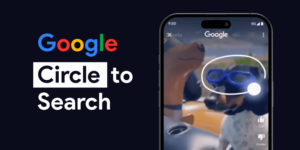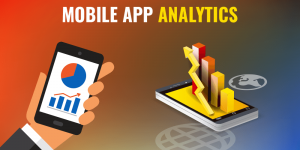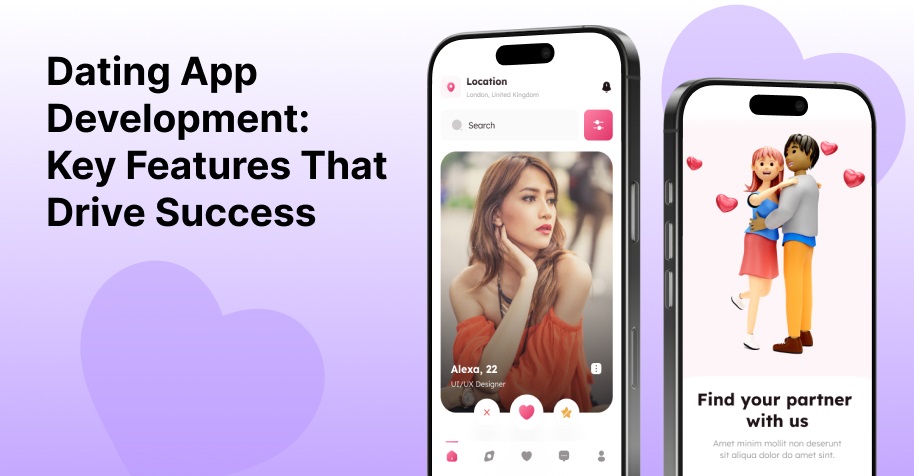
Dating applications are taking over the way people meet. They help millions of people to find partners, establish relationships, or make new friends. This high rate of growth has made the development of dating apps a rapid industry. This blog examines the most important features that can make a dating app successful
Love is something that man has been searching for. But dating apps are changing the interactions, connections, and relationships in this digital-first world. Things that used to happen by accident or by the introduction of a friend are now happening with the touch of a screen.
The popularity of applications such as Tinder, Bumble, and Hinge demonstrates the strength of such a platform. However, it is not about copying a pre-existing system but about building one that really stands out. It is the process of creating a genuine, secure, and interesting experience.
There is a lot of planning, deliberate features behind every match, and a powerful technical backbone. You may consider creating a dating application, and in that case, you should be aware of what it takes to make it successful. Everything counts, starting with the most basic features, up to algorithm design and cost considerations.
So, let’s break down the basics of the dating app development and find out what it takes to create a dating app that people will actually be willing to use.
Key Features Every Successful Dating App Should Have
A dating app is not all about swiping and chatting. Customers desire ease, security, and control. The right features make the difference between an app that feels empty and one that people return to daily.
1. User-Friendly Onboarding
First impressions matter. An easy and fast registration process, done through email, phone number, or social account, greatly decreases the drop-off rate. The simpler the onboarding operation, the higher the chances of retention.
2. Profile Customization
Profiles are the heart of any dating app. Let users add photos, bios, interests, and even short prompts. The more the profile is enriched, the better the possibility of valuable contacts.
3. Smart Matching System
This is where algorithms come into play. An excellent app does not simply show random profiles to its users. It studies preferences, behaviors, and swipes to provide compatible matches.
4. Geolocation-Based Search
Love is often local. Location-based matching simplifies the process of finding someone around you, and it is more likely that you will meet in real life.
5. Chat and Messaging
Chats keep the users addicted. Add text, voice messages, stickers, GIFs, or even video calls to make communication more interactive and personal.
6. Privacy and Safety Features
Users need to feel safe. Photo verification, profile reporting, blocking, and end-to-end encryption are some of the features that contribute to trust and credibility.
7. Push Notifications
Real-time notifications keep users active. Users can be notified in the app immediately by a soft push when somebody likes their profile or makes a comment.
8. Advanced Filters and Search
In addition to simple filters such as age or gender, users love the possibility of hobby, lifestyle, or even relationship goal filters. The more personalized the search, the more the experience.
9. Gamification
Additional elements, such as daily super likes or compatibility quizzes, are entertaining. They leave the users wondering and returning.
10. Integration with Social Media
The integration with Instagram or Spotify allows users to express more, which provides a natural point of conversation.
Step-by-Step Process of Dating App Development
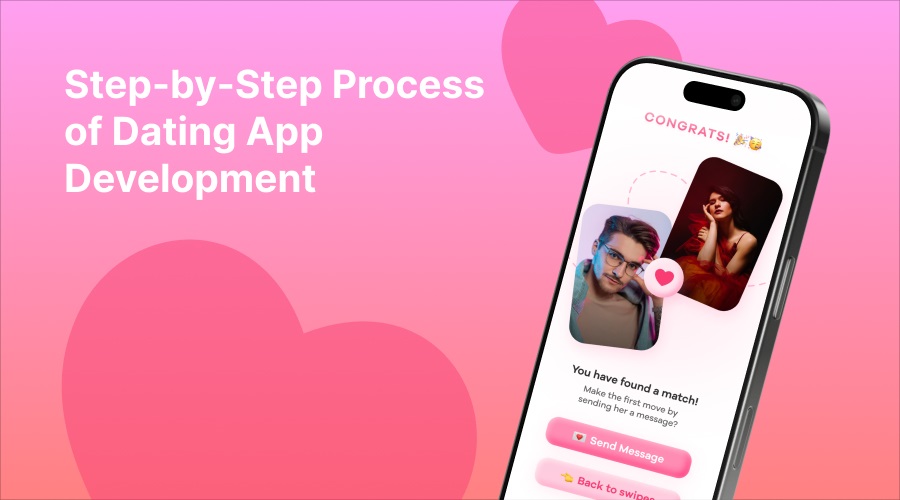
Developing a dating application is not only a matter of coding. It is a systematic process that includes research, design, and technology. The process normally proceeds as follows:
➢ Step 1: Market Research
Study competitors. Get to know what your users like and dislike. The objective is to identify a unique angle for your app.
➢ Step 2: Define Your Audience
Do you target a niche, young professionals, or older people (over 40 years old)? Being transparent with your audience affects all the features as well as branding.
➢ Step 3: Wireframing and Prototyping
Design the flow of the application before development. Prototypes help in user journey visualization and streamline the design before writing a single line of code.
➢ Step 4: UI/UX Design
A dating app has to be appealing and not complex. Pay attention to the simplicity of navigation, understandable call-to-action buttons, and simple structures.
➢ Step 5: Backend Development
It is the point where the heavy lifting occurs. The servers, databases, and APIs are designed to support user profiles, chats, and recommendations.
➢ Step 6: Frontend Development
This is where the user-facing side comes alive. This includes the coding of the interface that users will deal with on iOS, Android, or the web.
➢ Step 7: Integration of Features
Features are applied and tested to ensure smooth functionality, such as messaging and payment gateways for premium subscriptions.
➢ Step 8: Testing and QA
No one desires a bug in a dating application. Intensive testing promotes performance, security, and reliability across devices.
➢ Step 9: Launch and Marketing
A great app still needs visibility. Social ads, influencer programs, and launch campaigns can be used to bring the first wave of users.
➢ Step 10: Continuous Improvement
Monitor user feedback and behavior after launch. Continue adding features to be relevant and competitive.
Cost of Building a Dating App
The cost of developing a dating app varies based on several factors, including features, complexity in design, technology stack, and the location of your development team. Here’s a simple breakdown of dating app development costs by app type and complexity:
| App Type | Features Included | Estimated Cost Range |
| Basic Dating App | Simple onboarding, profile creation, basic matching, text chat | $40,000 – $60,000 |
| Mid-Range Dating App | Profile customization, geolocation, advanced filters, push notifications, photo verification | $60,000 – $120,000 |
| Advanced Dating App | AI-driven recommendations, machine learning models, video/voice chat, gamification, premium subscriptions | $120,000 – $250,000 |
Note: The costs include design, development, testing, and deployment. Keep in mind, there are long-term costs such as maintenance of the server, marketing, and updates, etc.
Dating App Development Algorithms
Any successful dating app has a strong matching algorithm behind it. These algorithms determine the connections and staying around of the users. A badly produced one may irritate users, whereas a good one will make them interested and optimistic. Let us take a look at the most important approaches.
1. Preference-Based Algorithms
These are the simplest ones. The app recommends matches depending on the preferences the users specify, such as age, gender, location, or relationship goals. Simple but effective, this method is trustworthy and will attract users who like to be in control. The disadvantage is that it does not adjust itself to behavior greatly, but it provides a point of compatibility and allows users not to get confused with irrelevant recommendations.
2. Behavior-Based Algorithms
Here, the app learns from actions. Who do users swipe right on? How often do they respond to messages? How long do they spend on certain profiles? Apps like Tinder lean heavily on this model. Over time, the algorithm will adjust the suggestions to reflect real behavior and not merely claims of preference. It makes the app look smarter and enhances the probability of improved matches.
3. Machine Learning Models
Machine learning takes things further. It does not simply observe direct inputs but observes subtle patterns: what kind of humor people react to, in what activities people are interested in together, or even reaction time during conversations. The app gets progressively more accurate with its matchmaking capabilities as time passes, offering its users accurate recommendations. Even the users might not be aware of the patterns that machine learning can detect.
4. Hybrid Models
The most effective dating apps combine multiple approaches. Hybrid models use preferences to set boundaries, behavior to understand tendencies, and AI to enhance predictions. This layered system ensures accuracy while keeping the experience fresh. Hybrid models also evolve with time, so the more a user engages, the better the matches get. This balance is why apps like “Hinge” have carved out loyal user bases.
Factors Influencing the Cost of Dating App Development
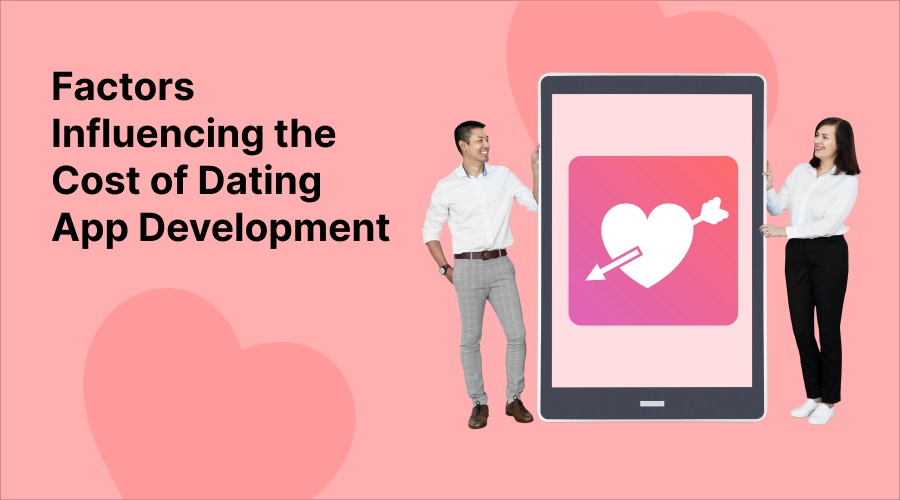
The cost of developing a dating app can vary, depending on what you are seeking. Some apps are extremely easy to create on a small budget, and there are those that need enterprise-level investments. Now, let’s discuss the major determinants of cost.
1. Features and Complexity
The most basic applications simply allow users to swipe and chat. However, as soon as you include additional features such as AI-based matching, video calls, or social media connectivity, the price will go up considerably. Each new feature needs to be designed, coded, and tested. Consider this: the more unique you want your app to be, the higher the development cost.
2. Design Quality
An excellent dating app is not only functional but also attractive and well-designed. Micro-interaction, custom animations, clean UI, and considerate UX design can take your app to the next level, but will also contribute to expenses. In such a competitive market, users cannot afford to deal with a low-end interface. Design is usually a worthwhile investment since first impressions can lead to user retention or uninstallation.
3. Platform Choice
Development for iOS only will be less costly than developing for both iOS and Android. Using cross-platform frameworks such as Flutter or React Native will allow reducing expenses, but occasionally will restrict performance. Native development might still be required, and it is costlier, especially when your app relies on real-time features, such as live video chat.
4. Tech Stack
The tools and structures that you adopt are important as well. Real-time chat servers, machine learning libraries, or location-based services add to the development time and complexity. More powerful backend infrastructure is used to support advanced AI or recommendation systems, which has a direct cost implication. It is a question of innovation versus budget.
5. Location of Development Team
One of the biggest cost considerations is the location of your developers. The US or Western European team can charge per hour up to $100-200, but the team in Eastern Europe or Asia can be hired at a rate of $30-60 per hour. The selection of an appropriate outsourcing partner can make a big difference to your budget without sacrificing quality.
6. Maintenance and Scaling
Building the app is just the start. You will have to deal with bug fixes, OS upgrades, server expenses, and user support. You will also have to scale servers and optimize performance as your number of users increases. The cost of maintenance can be up to 15-20% of the initial cost of development per year, so it should be considered in long-term plans.
Conclusion
Dating apps are not just swiping. They are digital ecosystems that connect people, which are driven by design, algorithms, and intelligent functions. The secret is to merge technology and human psychology, to provide a secure, interesting environment where the user feels appreciated and noticed. If you are planning to create one, consider important features like creating a simple design, and invest in algorithms that can provide true compatibility.
The future of dating apps is already becoming brighter. Your app may become the next big thing in contemporary relationships with the right combination of creative thinking and technology.

